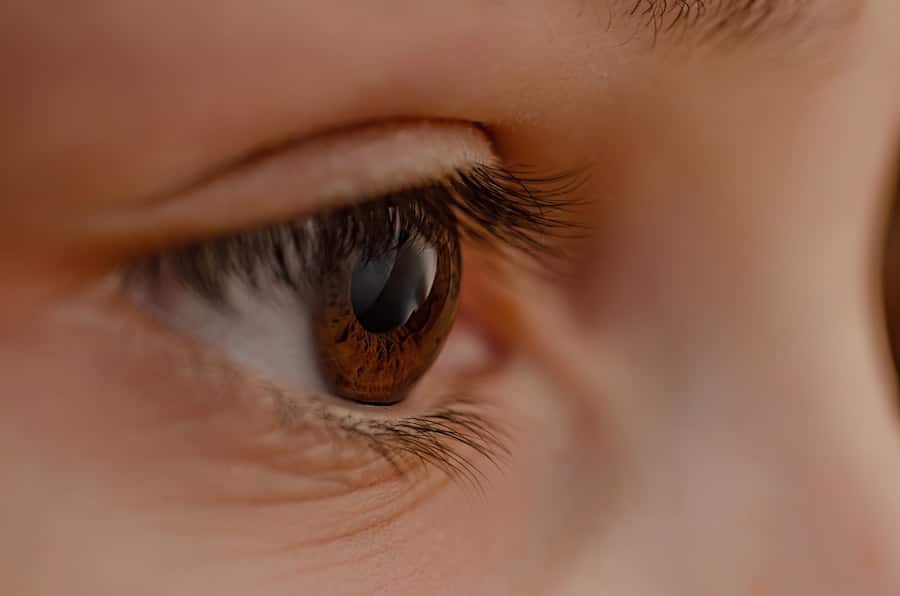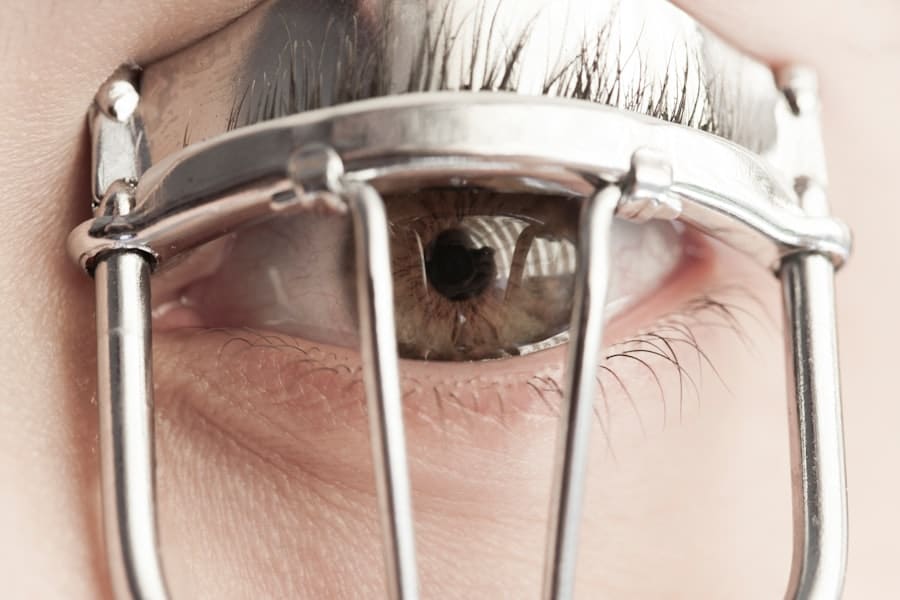Smart contact lenses represent a groundbreaking intersection of healthcare, technology, and user experience. These innovative devices are not merely corrective lenses; they are sophisticated pieces of technology designed to enhance vision and provide real-time data to the wearer. The concept of integrating technology into contact lenses has evolved significantly over the past few years, driven by advancements in microelectronics, materials science, and sensor technology.
As a result, smart contact lenses have the potential to revolutionize how we interact with our environment, offering a seamless blend of augmented reality (AR) and everyday life. The allure of smart contact lenses lies in their potential applications, which extend far beyond vision correction. They can monitor health metrics, provide augmented reality experiences, and even facilitate communication in ways that traditional devices cannot.
As the world becomes increasingly interconnected through the Internet of Things (IoT), the role of smart contact lenses is poised to expand, making them a focal point in discussions about the future of wearable technology. This article delves into the intricate technology behind smart contact lenses, their applications in augmented interfaces, the advantages they offer, and the challenges they face as they move toward mainstream adoption.
Key Takeaways
- Smart contact lenses are a revolutionary technology that combines the functionality of traditional contact lenses with advanced electronic components.
- The technology behind smart contact lenses includes microelectronics, sensors, and wireless communication, allowing for a wide range of applications in augmented interfaces.
- Smart contact lenses have the potential to revolutionize augmented interfaces in fields such as healthcare, gaming, and navigation, offering a seamless and immersive user experience.
- The advantages of using smart contact lenses in augmented interfaces include real-time data display, hands-free interaction, and personalized information delivery.
- Despite their potential, smart contact lenses also present challenges and limitations such as power supply, data security, and potential health risks, which need to be addressed for widespread adoption.
The Technology Behind Smart Contact Lenses
At the heart of smart contact lenses is a complex integration of microelectronics and advanced materials. These lenses typically incorporate tiny sensors, microprocessors, and wireless communication technologies that work together to collect and transmit data. For instance, some prototypes feature glucose sensors that can monitor blood sugar levels for diabetic patients, providing real-time feedback without the need for invasive blood tests.
This capability is made possible through the use of biocompatible materials that ensure comfort and safety for the wearer. Moreover, the development of flexible electronics has been pivotal in creating smart contact lenses that are both functional and comfortable. Traditional electronic components are rigid and bulky, making them unsuitable for integration into a lens that must conform to the curvature of the eye.
Researchers have made significant strides in developing ultra-thin, flexible circuits that can be embedded within the lens material itself. This innovation allows for a lightweight design that does not compromise the wearer’s comfort or vision quality. Additionally, advancements in battery technology have led to the creation of energy-efficient systems that can power these devices without requiring frequent recharging.
Applications of Smart Contact Lenses in Augmented Interfaces

The applications of smart contact lenses in augmented interfaces are vast and varied, ranging from healthcare monitoring to immersive gaming experiences. One of the most promising areas is in health monitoring, where these lenses can provide continuous data on various physiological parameters. For example, smart contact lenses equipped with sensors can track intraocular pressure, which is crucial for patients at risk of glaucoma.
By providing real-time data to healthcare providers, these lenses can facilitate timely interventions and improve patient outcomes. In addition to health applications, smart contact lenses have significant potential in augmented reality experiences. Imagine a scenario where users can access navigation prompts directly within their field of vision while walking or driving.
This capability could transform how we interact with our surroundings, allowing for a more intuitive and immersive experience. Companies like Mojo Vision are already exploring this space by developing lenses that overlay digital information onto the real world, enabling users to see directions, notifications, or even social media updates without needing to glance at a smartphone or other device.
Advantages of Using Smart Contact Lenses in Augmented Interfaces
The advantages of smart contact lenses in augmented interfaces are manifold. One of the most significant benefits is their unobtrusive nature. Unlike traditional augmented reality devices such as headsets or glasses, which can be bulky and distracting, smart contact lenses offer a discreet solution that integrates seamlessly into daily life.
This unobtrusiveness allows users to maintain their natural interactions with the world while still benefiting from enhanced information access.
Smart contact lenses can be programmed to deliver tailored content based on individual preferences or needs.
For instance, a user could receive alerts about nearby points of interest or reminders about upcoming appointments directly within their line of sight. This level of personalization not only enhances user engagement but also fosters a deeper connection between individuals and their environments. Furthermore, as these lenses evolve, they may incorporate artificial intelligence algorithms that learn from user behavior, further refining the information presented to each individual.
Challenges and Limitations of Smart Contact Lenses in Augmented Interfaces
Despite their promising potential, smart contact lenses face several challenges and limitations that must be addressed before they can achieve widespread adoption. One significant hurdle is the technical complexity involved in creating a fully functional device that is safe for long-term wear. The integration of electronic components within a lens that must remain comfortable and biocompatible poses significant engineering challenges.
Ensuring that these devices do not irritate the eye or cause adverse reactions is paramount for user acceptance. Additionally, there are concerns regarding battery life and power management. While advancements have been made in creating energy-efficient systems, the need for a reliable power source remains a critical issue.
Users may be reluctant to adopt smart contact lenses if they require frequent recharging or if battery life is insufficient for daily use. Moreover, ensuring that these devices can operate effectively in various environmental conditions—such as humidity or temperature fluctuations—adds another layer of complexity to their design.
Future Developments and Innovations in Smart Contact Lenses for Augmented Interfaces

Looking ahead, the future of smart contact lenses is filled with exciting possibilities driven by ongoing research and technological advancements. One area ripe for innovation is the integration of advanced display technologies within the lens itself. Researchers are exploring methods to create micro-LED displays that could project images directly onto the retina, providing users with high-resolution visuals without obstructing their natural vision.
Such developments could revolutionize how information is presented in augmented reality applications. Moreover, advancements in artificial intelligence and machine learning could lead to smarter lenses capable of adapting to user behavior in real time. For instance, these lenses could analyze a user’s gaze patterns to determine what information is most relevant at any given moment, dynamically adjusting the content displayed based on context.
This level of interactivity would enhance user experience significantly and could pave the way for entirely new applications across various fields, including education, entertainment, and professional training.
Ethical and Privacy Considerations with Smart Contact Lenses in Augmented Interfaces
As with any emerging technology, smart contact lenses raise important ethical and privacy considerations that must be carefully navigated. One primary concern revolves around data security and user privacy. Given that these devices can collect sensitive health information and personal data about users’ activities and preferences, ensuring robust security measures is essential to protect against unauthorized access or data breaches.
Users must be confident that their information is handled responsibly and transparently. Additionally, there are ethical implications related to surveillance and consent. The ability to capture images or record video through smart contact lenses could lead to potential misuse if not regulated properly.
The line between personal privacy and technological advancement becomes blurred when devices can unobtrusively record interactions or environments without explicit consent from those being observed. Establishing clear guidelines and regulations surrounding the use of such capabilities will be crucial in fostering public trust and acceptance of smart contact lenses.
The Impact of Smart Contact Lenses on Augmented Interfaces
The advent of smart contact lenses heralds a new era in augmented interfaces, offering unprecedented opportunities for enhancing human interaction with technology and the environment. As these devices continue to evolve through advancements in technology and materials science, they promise to reshape our understanding of wearable tech and its applications across various domains. From health monitoring to immersive augmented reality experiences, smart contact lenses stand at the forefront of innovation.
However, as we embrace these advancements, it is imperative to address the accompanying challenges and ethical considerations thoughtfully. Balancing technological progress with user safety and privacy will be essential in ensuring that smart contact lenses can be integrated into society responsibly. As we look toward the future, it is clear that smart contact lenses will play a pivotal role in shaping how we perceive and interact with our world—transforming not just our vision but also our very experience of reality itself.
In the rapidly evolving world of augmented interfaces, smart contact lenses are emerging as a groundbreaking technology, offering users a seamless blend of the digital and physical worlds. These lenses have the potential to revolutionize how we interact with information, providing real-time data overlays directly onto our field of vision. A related article that delves into the broader landscape of wearable technology is “Stay Stylish with Wear OS by Google,” which explores the integration of smart technology into everyday fashion. This article provides insights into how wearable tech, like smartwatches, is becoming an essential part of our daily lives, much like how smart contact lenses are poised to do. For more information, you can read the full article here.
FAQs
What are smart contact lenses?
Smart contact lenses are a type of wearable technology that incorporates electronic components and sensors to provide various functions such as augmented reality, health monitoring, and vision correction.
How do smart contact lenses work in augmented interfaces?
Smart contact lenses can overlay digital information onto the user’s field of vision, creating an augmented reality experience. This can include displaying notifications, navigation cues, or other relevant information directly in the user’s line of sight.
What are the potential applications of smart contact lenses in augmented interfaces?
Smart contact lenses have the potential to revolutionize various industries, including healthcare, gaming, navigation, and communication. They can be used to enhance vision, provide real-time health monitoring, and offer immersive augmented reality experiences.
Are smart contact lenses currently available for consumer use?
While smart contact lenses are still in the development and testing phase, there are companies and research institutions actively working on bringing this technology to market. However, they are not yet widely available for consumer use.
What are the challenges associated with smart contact lenses in augmented interfaces?
Challenges include ensuring the safety and comfort of wearing smart contact lenses, developing reliable power sources for the electronic components, and addressing privacy and security concerns related to the collection and transmission of personal data.

